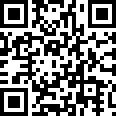According to the detection principle, encoders can be classified into optical, magnetic, inductive and capacitive. According to its calibration method and signal output form, it can be divided into incremental, absolute and hybrid.
1.1
Incremental Encoder Incremental Encoder directly outputs the three groups of square-wave pulses A, B and Z phases using the photoelectric conversion principle; A, B two groups of pulses have a phase difference of 90o, so that the rotation direction can be easily judged. Phase Z is one pulse per revolution for reference point positioning. Its advantage is that the principle of the structure is simple, the mechanical average life can be more than tens of thousands of hours, anti-interference ability, high reliability, suitable for long-distance transmission. The disadvantage is that the absolute position information of the shaft rotation cannot be output.
1.2
Absolute Encoder Absolute encoder is a sensor that outputs digital data directly. There are several concentric code channels in the radial direction on its circular code wheel. Each channel consists of light-transmitting and opaque sectors. The number of sectors adjacent to the code channel is a double relationship. The number of code channels on the code board is the number of bits of its binary digits. On one side of the code disk is a light source, and on the other side, there is a photosensitive element for each code channel; When the code wheel is in different positions, each photosensitive element converts a corresponding level signal according to whether it is illuminated or not, forming a binary number. The characteristic of this type of encoder is that it does not require a counter. A fixed digital code corresponding to the position can be read out at any position on the spindle. Obviously, the more code channels, the higher the resolution. For an encoder with N-bit binary resolution, the encoder must have N code channels. At present, there are 16 absolute encoder products in China.
Absolute encoders use natural binary or circular binary (Geray code) methods for photoelectric conversion. Absolute encoders and incremental encoders differ in that they are light-transmitting and opaque line patterns on the disk. The absolute encoder can have several codes. The absolute position can be detected based on the code on the readout code. The coding design can use binary code, cyclic code, two's complement and so on. It is characterized by:
1.2.1 The absolute value of the angular coordinate can be read directly;
1.2.2 There is no cumulative error;
1.2.3 Position information will not be lost after the power is cut off. However, the resolution is determined by the number of binary digits, which means that the accuracy depends on the number of digits. There are currently 10 digits, 14 digits, and so on.
1.3 Hybrid Absolute Encoder A hybrid absolute encoder that outputs two sets of information: one set of information used to detect magnetic pole position with absolute information function; the other set is exactly the same as incremental encoder output information.
Photoelectric encoder is an angle (angular velocity) detection device. It will input the amount of the angle to the shaft and convert it into the corresponding electric pulse or digital quantity using the photoelectric conversion principle. It has the advantages of small size, high precision, reliable work, digital interface, etc. . It is widely used in devices and devices that require angle detection such as CNC machine tools, rotary tables, servo drives, robots, radars, and military target measurements.




